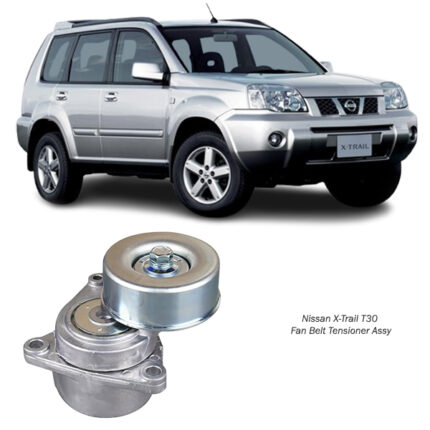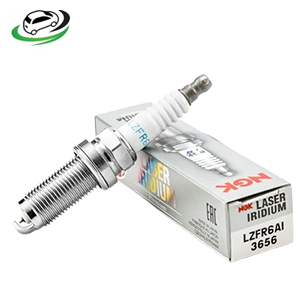-9%
Get Mitsubishi Outlander CW Fan Belt Tensioner Assy 04891595ab in Kenya
A belt tensioner is a small component with four main parts: Base: A metal part that holds all the other parts. Tensioner arm: Located at the bottom of the tensioner; applies pressure to the belt, and allows enough slack to help you adjust or remove the belt. Spring: Provides pressure to keep the tensioner tight.
Benefits of a Fan Belt Tensioner
1. Maintains Proper Belt Tension: The primary function of a fan belt tensioner is to maintain the correct tension on the engine’s drive belts. Proper tension ensures that the belts transmit power effectively from the crankshaft to various engine accessories, such as the alternator, water pump, power steering pump, and air conditioning compressor.
2. Extends Belt Life: By keeping the drive belts properly tensioned, the tensioner helps prevent excessive wear and tear. A well-maintained tensioner reduces the risk of belt slippage, misalignment, and premature belt failure, thus extending the lifespan of the belts and saving on replacement costs.
3. Ensures Efficient Operation: Properly tensioned belts ensure that engine accessories operate efficiently. This efficiency translates into optimal performance of critical components such as the alternator (for charging the battery), water pump (for cooling the engine), and power steering pump (for easier steering).
4. Reduces Noise: A fan belt tensioner minimizes the risk of belt slippage, which can cause squealing or chirping noises. By maintaining the correct tension, the tensioner helps ensure smooth and quiet operation of the engine’s accessory drive system.
5. Protects Engine Components: Correct belt tension prevents undue stress on engine components and accessories. Excessive tension can lead to bearing failure in accessories, while insufficient tension can cause belts to slip, leading to overheating and loss of function. The tensioner plays a critical role in protecting these components from damage.
Signs a Fan Belt Tensioner Needs Replacement
1. Squealing or Chirping Noises: One of the most common signs of a failing fan belt tensioner is a squealing or chirping noise coming from the engine bay. This noise often indicates that the belt is slipping due to inadequate tension, which can be caused by a worn or failing tensioner.
2. Belt Wear: If you notice signs of excessive wear on the drive belts, such as fraying, cracking, or glazing, it could indicate that the tensioner is not maintaining proper belt tension. Uneven or accelerated belt wear often points to tensioner problems.
3. Belt Slippage: A loose or slipping belt can result in intermittent loss of power to engine accessories. This can cause various issues, such as the alternator failing to charge the battery properly, the power steering pump not providing enough assistance, or the air conditioning system not cooling effectively.
4. Engine Overheating: A malfunctioning tensioner can cause the water pump to operate inefficiently due to belt slippage, leading to inadequate coolant circulation and engine overheating. If your engine temperature gauge shows higher than normal readings, the tensioner might be to blame.
5. Visible Tensioner Wear or Damage: Inspect the tensioner for visible signs of wear or damage. This includes checking for cracks, corrosion, or a misaligned tensioner pulley. A damaged or misaligned tensioner can cause the belt to run off track or not maintain proper tension.
6. Loss of Tensioner Spring Force: The tensioner relies on a spring mechanism to maintain the correct belt tension. Over time, the spring can weaken, reducing its ability to keep the belt properly tensioned. If the tensioner pulley feels loose or lacks adequate resistance when manually moved, the spring may be worn out.
7. Unusual Vibrations: Excessive vibrations from the engine compartment can indicate that the tensioner is not holding the belt tightly enough. These vibrations can be caused by a loose belt flapping or an imbalanced tensioner pulley.
8. Warning Lights: In modern vehicles, a failing tensioner can indirectly cause warning lights to appear on the dashboard. For instance, if the alternator belt slips, it can lead to a battery warning light due to insufficient charging.
Follow us on Facebook for more parts.



